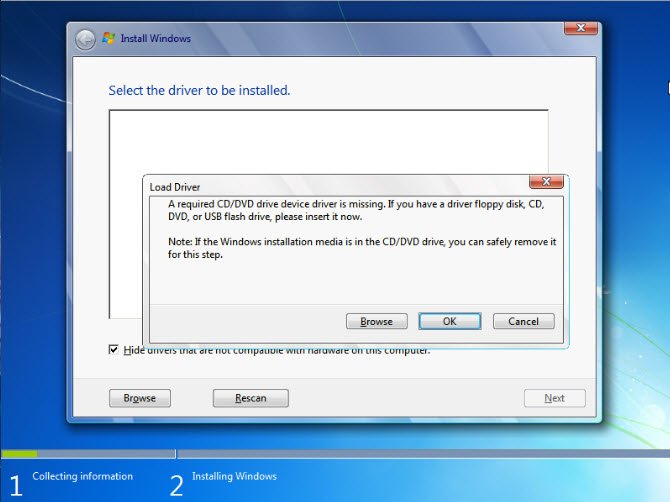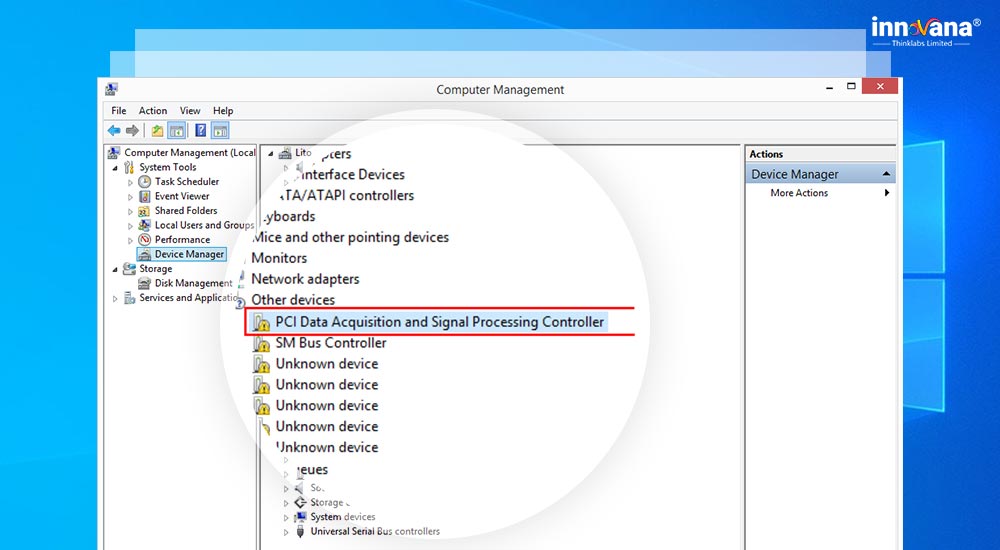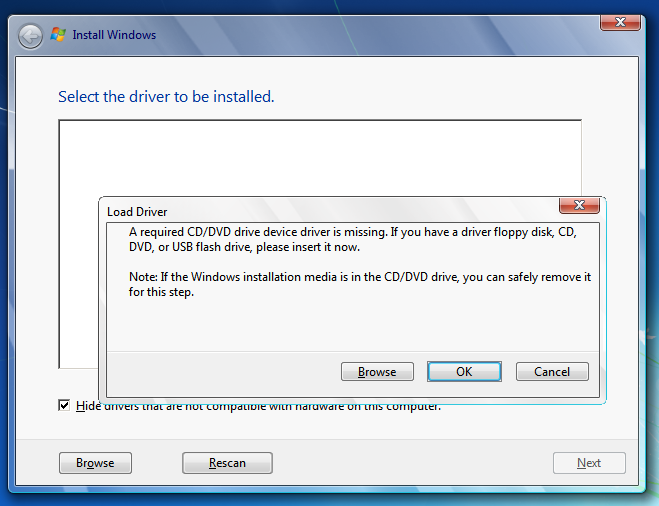Windows 7 Usb Controller Driver Mising
- It mentions that if are using Windows guest operating systems (?) that Drivers are not available for the xHCI which is used for usb 3.0 which may cause an issue but probably shouldn't because the usb device should just slowdown but maybe that is a red-herring and usb 3.0 drivers are required to use usb 3.0 devices on any port.
- As I already mentioned above, The Driver for the USB Controller is (also) not installed correctly, so all the USB ports are not working; there is no internal DVD drive so using a DVD to transfer the Drivers manually is also out of the question.
- Use the Windows 7 USB/DVD Download tool to create a bootable USB flash drive, and then use the USB flash drive to install Windows. More Information This issue occurs for one of the following reasons.
‘There is something beautiful about a blank canvas, the nothingness of the beginning that is so simple and breathtakingly pure.’

Mar 30, 2020 Fix: No Hard Drives Found in Windows 7 Installer Method 1: Format/Clean the Hard drive using ‘diskpart’ in command prompt. If your hard drive is detected by BIOS then. Method 2: Load the hard drive storage controller drivers from a USB into the Windows setup. If your SATA/storage.
Piper Payne
Gone are the days when users would have to go through a lengthy process just to install Windows. After all, Microsoft has made the steps easier and simpler. On the other hand, it is still possible for you to encounter driver-related problems that may prevent you from completing the installation process.
So, what should you do when a media driver is missing on Windows 10? You might notice that the USB installation media is booting properly. However, the installation process is not successful due to a missing USB hub driver. There are various reasons why this error occurs, and here are some of them:
- Corrupted ISO media or DVD drive
- Malfunctioning USB drive or port
- Missing USB or DVD driver
- Unit uses Serial Advanced Technology Attachment (SATA) instead of Integrated Drive Electronics (IDE)
You don’t have to panic because we will teach you how to fix media driver missing error. Keep reading this article to learn the solutions that will help you get rid of this problem.
Solution 1: Meeting the requirements for Windows 10
Before you can even try fixing the issue, you have to ensure that your computer meets the requirements for Windows 10. Moreover, you should update your BIOS before you initiate a clean installation of the operating system. Listed below are the minimum system requirements for running Windows 10:
- RAM: 2GB for 64-bit or 1GB for 32-bit
- CPU: 1GHz or a faster processor or SoC
- HDD: 20GB for 64-bit OS or 16GB for 32-bit OS
- GPU: DirectX 9 or a later version with WDDM 1.0 driver
- Display: At least 800×600
If you want to have a seamless workflow, it would be best to have at least 2GB of RAM or 3GB for the 64-bit version. This will also provide you with a better processing power.
Solution 2: Trying a different USB port midway
Some users have found a way to work around this problem, and the solution is quite easy. When they initiated a clean installation of Windows 10, they used the method for fixing the same error in Windows 7 and Windows 8. Basically, all you have to do is remove the USB installation drive midway through the process, then try using another port. Here are the steps:
- Download the Media Creation Tool and create a USB installation drive.
- Boot your computer from the drive.
- Wait until all the installation files have loaded.
- Select your preferences, then click Install Now.
- Once you see the error message, click Cancel.
- Remove the USB drive and plug it into a different port.
- Click Install Now. The installation process should continue from here.

The aforementioned solution should work for you. However, it is worth noting that this method was mostly for users who had previously installed Windows 10 on their unit.
Solution 3: Using a different USB flash drive
For some strange reason, some USB flash drives, albeit compatible, won’t load all the installation files. In this case, it would be advisable to install Media Creation Tool on a different USB stick.
It is also worth noting that if you have never installed Windows 10 on the computer in question, it is possible that the certain issues with the USB 3.0 port would prevent the BIOS from loading the installation files. As such, you should only use the USB 2.0 ports when installing Windows 10. You can easily identify a USB 3.0 port by the blue strip inside it.
Solution 4: Changing the SATA to IDE
It is possible that the SATA mode is causing the problem. This error specifically occurs when the machine is using IDE, but the installation media boots with SATA. With that said, changing the SATA to IDE in BIOS or UEFI can resolve the issue. Simply follow the instructions below:
- Boot into BIOS.
- Select any of the following: Advanced, Storage Configuration, Drive Configuration, or IDE Configuration.
- Go to SATA Mode. You can also go to Set SATA As or SATA Configuration.
- Change the option to IDE, Compatible, or ATA.
- Save the changes you’ve just made.
- Try installing Windows 10 again and check if the error has been resolved.
Resolve PC Issues with Driver Updater
Unstable PC performance is often caused by outdated or corrupt drivers. Auslogics Driver Updater diagnoses driver issues and lets you update old drivers all at once or one at a time to get your PC running smoother
Solution 5: Disabling/enabling certain options in BIOS
Some users have tried working around the error by disabling certain options in BIOS. If you are trying to install a 64-bit version of Windows 10, you can boot into BIOS and try to disable Legacy USB and Legacy BIOS. Before you plug in the flash installation drive, make sure that you’ve enabled the AHCI.
In some configurations, users can set the USB option solely to USB 3.0. On the other hand, we recommend setting it to Auto if such option is available in the BIOS menu.
Solution 6: Opting for Rufus
If you’ve tried the methods above and the error persists, you may want to opt for Rufus instead of using the Media Creation Tool. Provided by Microsoft, this program typically works just fine. However, we recommend starting from scratch using the alternative tool if you’ve exhausted all other solutions. Moreover, if you’ve been installing Windows 10 from a USB flash drive, we suggest downloading the ISO file and burning it to a DVD instead.
Once you’ve successfully installed Windows 10, we advise you to regularly update your drivers, using Auslogics Driver Updater. As the error message suggests, the problem occurred due to a missing media driver. As such, you should ensure that you have the latest manufacturer-recommended versions of your drivers. This prevents similar issues from happening and even improves your computer’s speed and performance.
Do you have clarifications or suggestions?
Let us know in the comments below!
Summary :
Are you bothered by a required CD/DVD drive device driver is missing error while installing Windows 7 with a USB drive? Are you looking for the way to solve it? If your answers are yes, you can get solutions provided by MiniTool from this post.
Quick Navigation :
USB drive is one of the most common Windows installation mediums today. However, when you try to install Windows 7 or Windows Vista using a USB drive, you may encounter the following error message:
“A required CD/DVD drive device driver is missing. If you have a driver floppy disk, CD, DVD, or USB flash drive, please insert it now.”
You receive the error mainly because the USB drive is not recognized by Windows Preinstallation Environment (WinPE).
How to fix a required CD/DVD drive device driver is missing in Windows 7? You can try the following solutions to solve the problem.
Are you troubled by Windows cannot be installed to this disk like MBR disk, GPT disk, and dynamic disk? Find the top solutions to continue Windows installation.
Solution 1: Check the USB Connection
When you see a required CD/DVD drive device driver is missing error, you can try fixing it simply by unplugging the USB drive and then plug it back in the computer. Then you should be able to install Windows 7 with the USB drive without any problems.
If the error still exists, you need to try another USB port. If you are using USB 3.0 port, switch it to USB 2.0 port and then install the system again.
This post provides two ways for you to install Windows 7 in UEFI mode.
Solution 2: Change the USB Settings in BIOS
There is a setting named USB 3.0 Configuration in Pre-OS in BIOS of many computers. It defines whether the USB ports on the computer function as USB 3.0 or 2.0 ports, before the computer boots into the operating system.
As we know, Windows 7 installation media doesn’t support for USB 3.0. To solve the “a required CD/DVD drive device driver is missing” error, you can try changing the BIOS settings for USB 3.0 support during startup to AUTO or Disable.
Step 1: Disconnect the Windows 7 installation USB and then restart the computer. When the manufacturer’s logo appears, you will be noted how to enter BIOS or Setup. Usually, you need to press F2 or Del.
Step 2: After you get into BIOS, select System Configuration.
Step 3: Locate the USB 3.0 Configuration in Pre-OS setting and change the status to Disable or Auto.
Step 4: Save the changes you have made and exit BIOS.
Once it’s done, you can plug your Windows 7 installation USB back into the computer and boot from it to install Windows 7. You should be able to install windows 7 successfully without running into a required CD/DVD drive device driver is missing error. After you install your Windows 7, you can set USB 3.0 Configuration in Pre-OS back to Enabled.
Solution 3: Disable AHCI Mode
In some cases, the drive you are using may be incompatible with the Microsoft AHCI driver (msahci.sys). If your controller is set to AHCI in BIOS, you could encounter “a required CD/DVD drive device driver is missing” error. To solve the problem, you should disable AHCI mode in BIOS by changing it to IDE mode.
Please enter BIOS and navigate to the settings like Storage controller setting, SATA Mode, or SATA Configuration, and you should be able to find the options for “AHCI”, “IDE”, “RAID” or “ATA” mode. You need to switch it to IDE option to disable AHCI mode. Then save the changes and reboot the computer. For more detailed steps about how to change the setting, you can visit your PC manufacturer’s website.

Free Usb Controller Driver
Solution 4: Disable Driver Signature Enforcement
Driver Signature Enforcement helps to prevents malware from attacking the Windows kernel as it ensures only drivers that have been sent to Microsoft for signing will load into the Windows kernel. After disabling Driver Signature Enforcement, you can install drivers that aren’t officially signed. You should have a try to solve the problem you are facing.

You need to restart the computer. When it is shut down completely, turn it on and press F8 key about every second at startup to get Advanced Boot Options. Then select “Disable driver signature enforcement” and save the changes, and then continue the boot process.
If you encounter the problem while installing Windows 7, you can try the solutions above.
Download Usb Driver Windows 7
By the way, the mainstream support for Windows 7 expired on January 13, 2015, and its extended support is soon to expire on January 14, 2020. You can upgrade your system to Windows 10 to get better experience. You can read this post to get information about Windows 7 and Windows 10.
